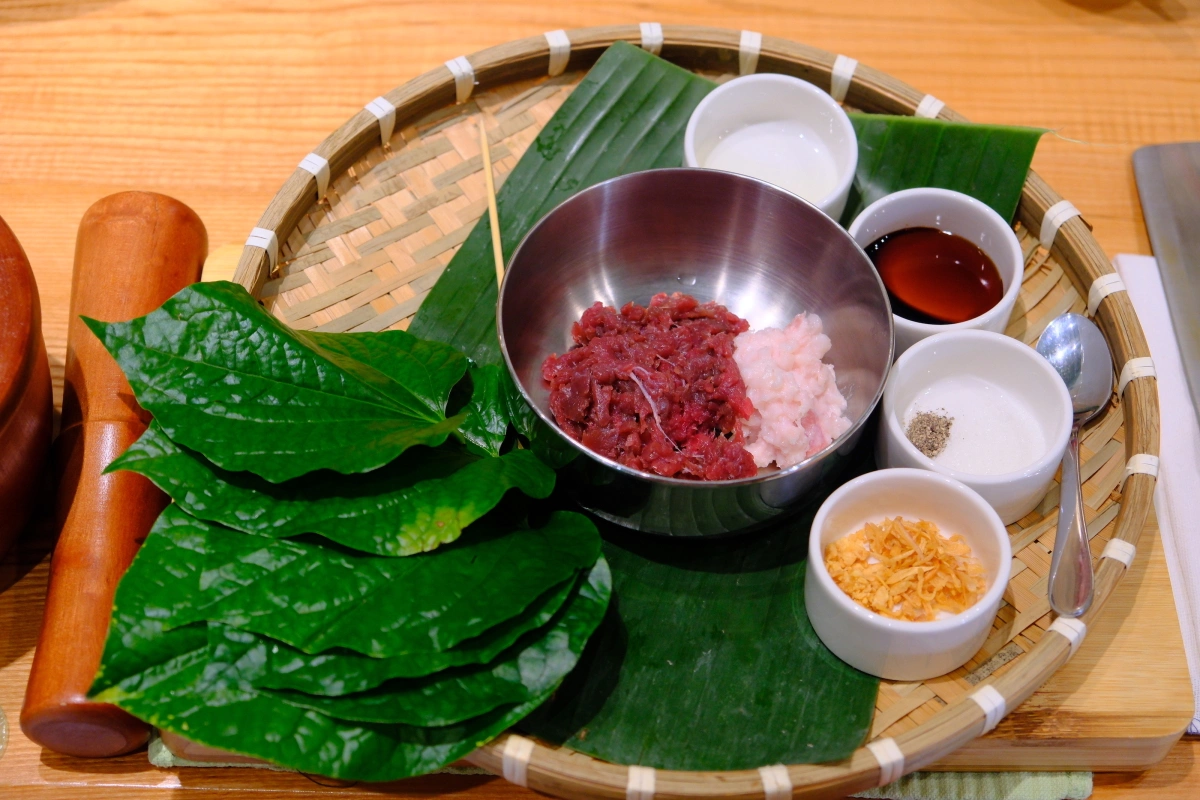M.O.M Cooking Class is located on the upper floor of a house in a narrow alley on Yersin Street, District 1, just 450 meters from Ben Thanh Market. The class is divided into four areas: a large kitchen, a row of practice tables, a resting area, and an outdoor charcoal grilling space. The menu changes every three months, featuring dishes from Vietnam's three regions.
The guide in the photo is preparing cooking tools and ingredients for a class of nine foreign tourists from the Philippines, the U.S., Canada, and Malaysia.
This session focuses on southern Vietnamese cuisine, including goi cuon (summer rolls), goi hoa chuoi (banana blossom salad), bo cuon la lot (beef wrapped in betel leaves), and banh xeo (Vietnamese pancakes). The class often includes an optional market tour to explore and discover local ingredients.
The first dish the group learned was summer rolls with shrimp and pork. Pre-prepared ingredients included cooked shrimp, pork, herbs, seasonings for dipping sauce, and rice paper.

Before cooking, the instructor explained the ingredients in detail. Vin Saxena, an American tourist, attentively observed the structure of the banana blossom and was surprised to learn it is a common ingredient in Vietnamese meals.
The ingredients for the salad were pre-prepared. The instructor demonstrated how to slice the banana blossom and soak it in a mixture of water and lime to prevent browning.


The tourists wrapped the ingredients in betel leaves and grilled the wraps on an outdoor charcoal grill.
The side dishes for bo la lot, including noodle rolls and slices of fresh pineapple and starfruit, were pre-prepared by the class kitchen.
Nguyen Dinh Le Hoa (C), founder of the cooking class, explaining to tourists Sarah and Vin Saxena about the accompanying ingredients for bo la lot (pictured).
Hoa said the class menu includes dishes with ingredients easily found in Vietnamese supermarkets abroad. The dishes promote culture and are practical for tourists to cook at home. After each class, detailed recipes are provided to participants.
The final dish most eagerly anticipated by the group was banh xeo. Mini gas stoves, cast iron pans, and ingredients for banh xeo are provided. The instructor first demonstrated making the pancakes. Traditional banh xeo is cooked over a charcoal stove, but the class used gas stoves for safety and ease of practice at home.
To impart a smoky flavor, the cast iron pan was lightly oiled and heated over high flames for 2-3 minutes until it smoked before cooking the shrimp, pork, and batter. The instructor shared a tip to make the pancakes crispy: using soda water instead of plain water in the batter.

Vin Saxena, an American tourist, was enthusiastic about his first attempt at making banh xeo. He also chose to spend his last day in Ho Chi Minh City attending this cooking class. Most tourists book the class through online travel platforms.
Hoa noted that tourists often join the class on their last day in Vietnam after trying local dishes in restaurants. The cost per class ranges from US$30-35 during the low travel season for international tourists (June to September) and US$40-45 during the peak season (October to May).
During the low season, the class hosted around 10 participants per day, increasing 2-3 times during peak season.














